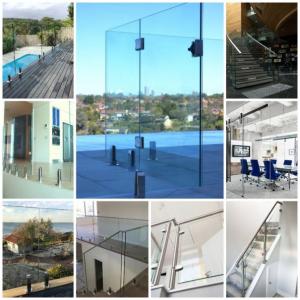Warm edge sealing system of insulated glazing
Warm edge sealing system of insulated glazing from insulated glass panels manufacturer

The outer seal structure glue of the strip is used as a secondary sealant to ensure that the insulating glass has sufficient structural strength.
(2) It is especially suitable for the production of special-shaped hollow insulated glazing and gas-filled hollow glass, especially suitable for special-shaped gas-filled Low-E hollow glass,said by insulated glass panels manufacturer. Because the strip itself does not have volatile gas that adversely affects the Low-E film, it can ensure Low-E hollow Glass has a long service life.
(3) Super spacer strip type insulating glass

Traditional warm side partition system
(1) U-shaped strip hollow insulated glazing
insulated glazing for windows can only use hot melt butyl glue as a separate sealing material. Insulating glass used for curtain walls must be sealed with sufficient depth of structural glue outside the hot melt butyl glue to ensure sufficient bonding strength and service life. When used as gas-filled insulating glass, you must pay great attention to the sealing of the U-shaped strip joint.
(2) Glue-injected aluminum hollow glass
It is basically the same as traditional aluminum strip insulating glass. It should be noted that because this product uses heat insulation material to bond between two aluminum strips, the thickness of the entire aluminum strip must exceed 12mm to achieve it. Due to the characteristics of the material, it is difficult to achieve bend processing at the corners, so when designing and using inflatable insulating glass, attention should be paid to the sealing control at the corners.
Process conditions said by insulated glass panels manufacturer
1. According to the wind load, control the required size of the opening and the thickness of the required glass.
2. The hollow glass must be made and constructed, and the size cannot be changed. The opening for assembling the hollow glass should be rectangular and vertical. Pay attention to check the accuracy of its specifications.
3. Insulating glass is not allowed to have any surface covered by paint or paper, because this will cause local overheating and cause breakage.
4. The hollow glass shall not be in direct contact with the frame.
5. The installation requirements should vary according to the type of material of the inlaid insulating glass.
main problem

During the use of insulating glass, when the ambient temperature is reduced to the dew point in the dry air layer, the surface of the dry air layer will produce dew or frost. The performance of insulating glass is affected by condensation or frost on the inner surface of the glass. If it is ensured that the air layer does not condense above minus 40 degrees Celsius, there will be no air layer condensation during the use of insulating glass.
The dew point of hollow glass refers to the temperature when the humidity of the air sealed in the air layer reaches a saturated state. Below this temperature, the water vapor in the air layer will condense into liquid water. It can be concluded that the higher the water content, the higher the dew point temperature of the air. When the temperature of the inner surface of the glass is lower than the dew point of the air in the air layer, the moisture in the air will condense or frost on the inner surface of the glass,said by insulated glass panels manufacturer.
The increase in the dew point of hollow glass is caused by external moisture entering the air layer without being absorbed by the desiccant. There are three reasons that may cause the dew point to increase:
(1) There are air bubbles in the sealant, causing air moisture to enter.
(2) Water vapor diffuses into the air layer through the polymer.
(3) The effective adsorption capacity of the desiccant is low.

 English
English Russian
Russian




